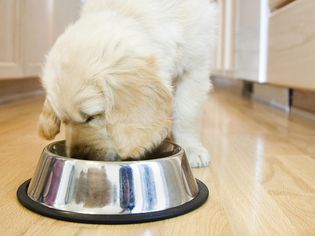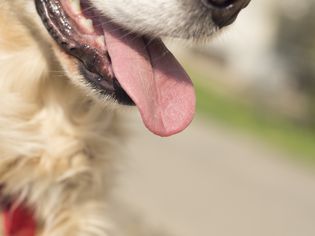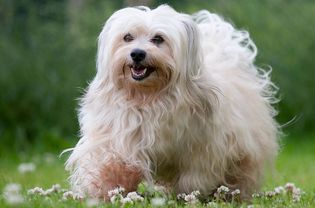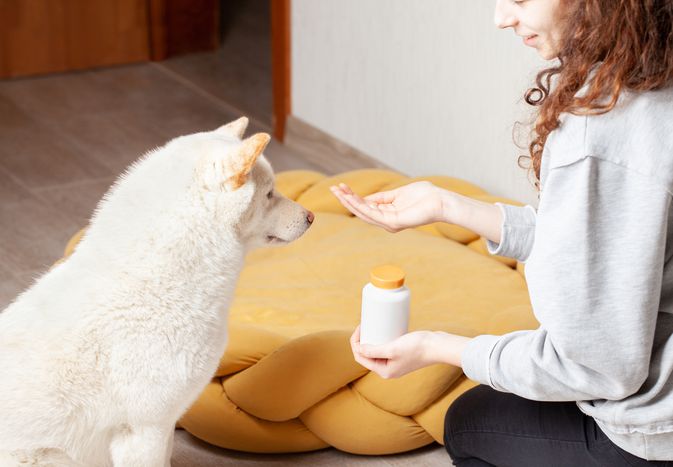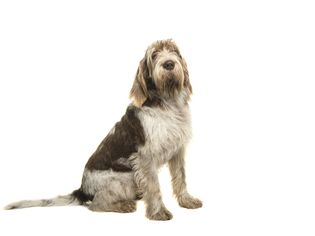The pug is a small dog breed from China with a short, smooth coat in black or fawn, a short snout, a wrinkled face, and a curled tail. They are sturdy little dogs that pack in a lot of personality. Pugs are sweet and good-natured with a little bit of spunk. They are adaptable little dogs and do well in many different living situations, including homes with kids, older adults, and other pets, in the city or the country.
Learn more about their personality, appearance, care, and other traits.
Breed Overview
GROUP: Toy
HEIGHT: 10 to 13 inches
WEIGHT: 14 to 18 pounds
COAT: Short and smooth
COAT COLOR: Fawn or black with a black face mask
LIFE SPAN: 13 to 15 years
TEMPERAMENT: Affectionate, sweet-tempered, playful
HYPOALLERGENIC: No
ORIGIN: China
Click Play to Learn More About the Jovial Pug
Characteristics of the Pug
Pugs generally have a very affectionate and upbeat temperament. Their personalities are marked by their love of people. Pugs love to play but don't need as much exercise as other breeds; they'll be able with daily walks or playtime in the yard with their families. After some exercise, pugs will happily curl up for a snooze. They typically reserve their barks just to alert their families of a stranger but are otherwise on the quieter side, making them good apartment dogs. All in all, pugs just want to spend time with the people they love most.
| Affection Level | High |
| Friendliness | High |
| Kid-Friendly | High |
| Pet-Friendly | High |
| Exercise Needs | Medium |
| Playfulness | High |
| Energy Level | Medium |
| Trainability | Medium |
| Intelligence | Medium |
| Tendency to Bark | Low |
| Amount of Shedding | High |
History of the Pug
The pug is one of the world's oldest dog breeds, with a history dating back to at least 400 BC. There is much debate over the true origin of the pug, but it is generally believed that the breed came from China. The pug might be related to the Pekingese, though some believe the breed descended from the bulldog or mastiff. Emperors of China treasured the little dog, and they were a highly desired gift.
Pugs began to spread around the world starting in the 1500s. They became popular among European royalty, which sparked more widespread breeding. According to the American Kennel Club, pugs became the mascot of Holland's royal House of Orange when a pug saved the life of the Prince of Orange by barking to warn of an impending attack from the Spanish. William and Mary of Orange brought their pugs with them to England, which led to much excitement and desire for the breed among the British
The American Kennel Club recognized the breed in 1885. It is still one of the most popular dog breeds in the United States today.
Pug Care
Pugs aren't high-energy dogs, but they still need daily exercise and playtime. Like all dogs, they require consistent training and socialization to make sure they are well-mannered. Thanks to their short coat, their grooming needs are fairly low-maintenance.
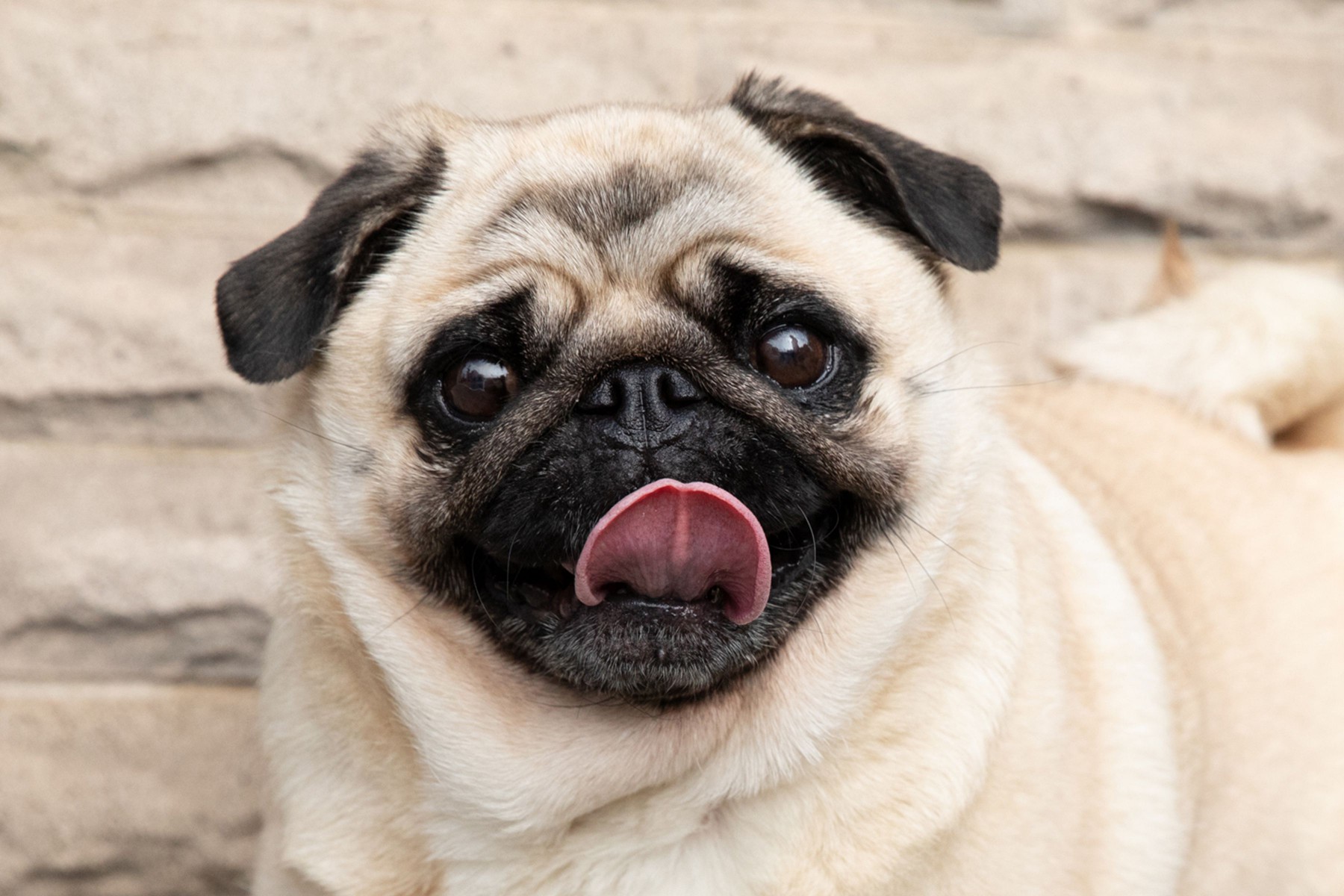
The Spruce / Kristie Lee
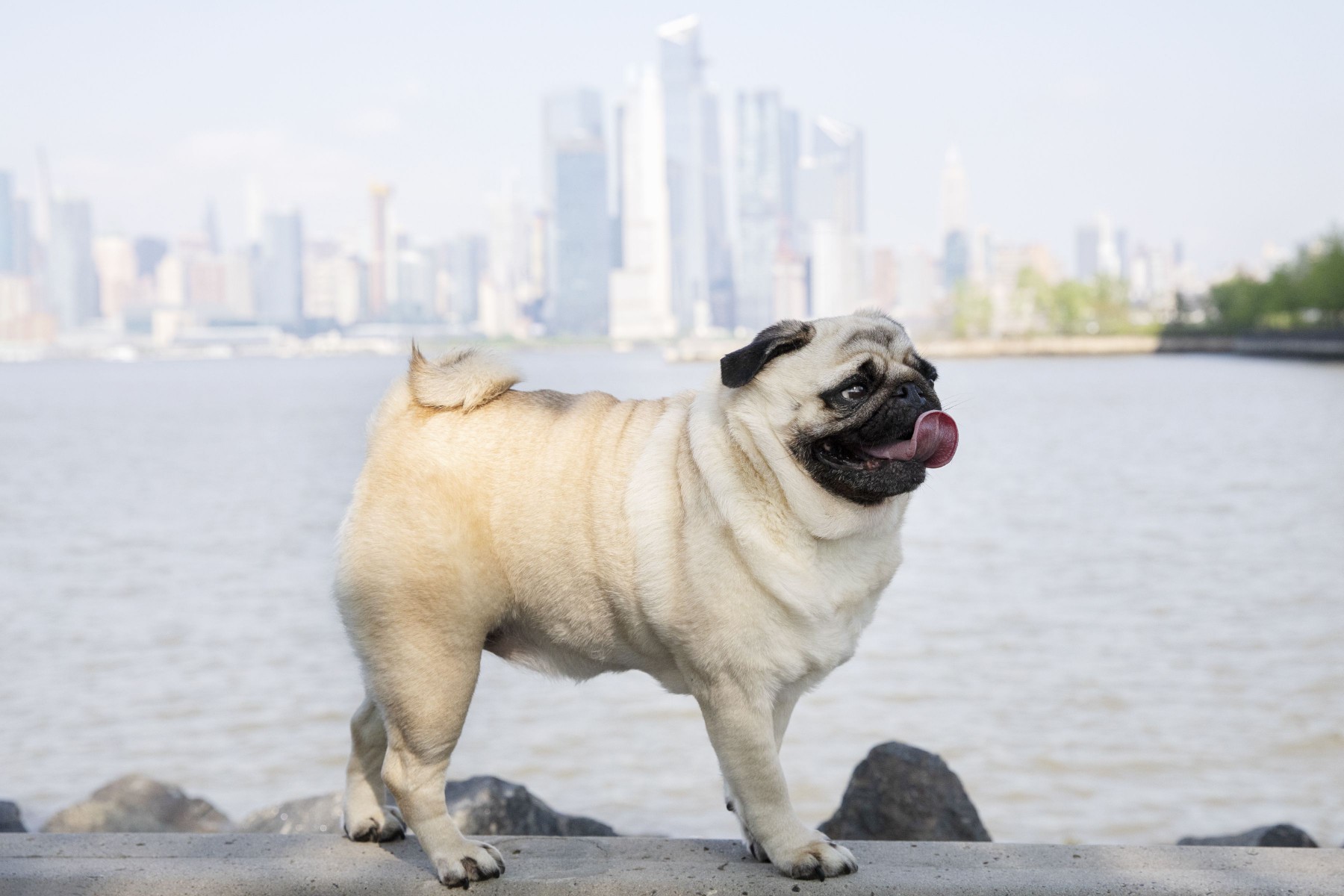
The Spruce / Kristie Lee

The Spruce / Kristie Lee
Exercise
Pugs need a moderate amount of exercise, roughly around an hour per day. A morning and evening walk plus some active playtime should be sufficient. Pugs also love participating with their humans in dog sports, such as agility and rally. They enjoy puzzle toys and interactive toys to challenge them physically and mentally.
Take care not to overexert your pug, especially in warm weather. The pug's short muzzle makes it hard for the breed to cool themselves through panting, which can lead to heat exhaustion and heat stroke.
Grooming
The pug’s short coat is fairly easy to care for, only requiring basic grooming. Plan to brush weekly to remove loose fur and distribute skin oils, and bathe roughly once a month, depending on how dirty your dog gets. Plan to use a soft damp cloth to clean the pug’s skin folds, especially around the face, every week as they are prone to infection. Make sure to dry the folds thoroughly.
Trim your pug's nails every month or when they start clicking on the floor, and aim to brush their teeth every day.
Training
Pugs typically are eager to please and respond well to positive training methods. They are especially motivated by treats, though it’s important not to overfeed them as they are prone to obesity. Using part of their daily meals for training treats is a good option.
Begin training and socialization at as young of an age as possible. Aim to expose your pug to different people, other animals, and various locations to get them comfortable with the world around them. Pugs are typically outgoing dogs, and having positive experiences in social situations will reinforce their comfort and confidence.
Common Health Problems
Like many dog breeds, pugs are prone to some hereditary health issues, including:
- Brachycephalic syndrome (breathing problems and overheating due to their flat face)
- Eye problems, such as dry eye and corneal ulcers
- Allergies and other skin issues
- Encephalitis
- Hip dysplasia
- Patellar luxation
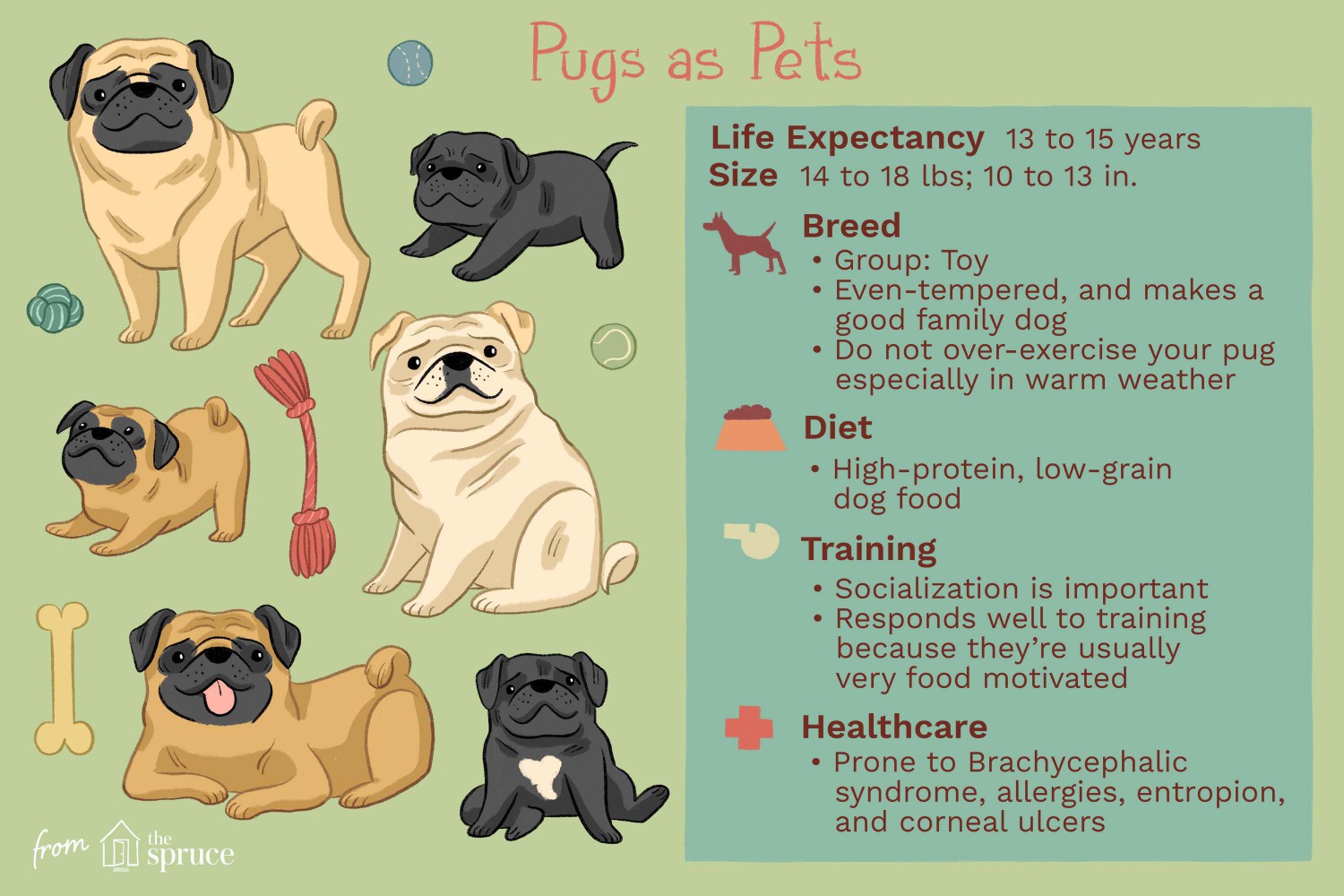
The Spruce / Kelly Miller
Diet and Nutrition
Feed your pug a high-quality, nutritionally balanced dog food. It’s common to feed two measured meals per day, but you should always discuss both the amount and the type of food with your vet, as nutritional needs can change with age, activity level, and more. Pugs are prone to obesity because they love food, so it’s important to watch treats and other extra food intake to ensure your dog is not overeating. Always have fresh, clean water available.
Where to Adopt or Buy a Pug
Pugs are a popular dog breed, and before going to a breeder, check local animal shelters and breed-specific rescue groups for a pug in need of a home. If you’re looking for a puppy from a reputable breeder, expect to pay around $500 to $2,000, though this can vary widely. If you decide to purchase from a breeder, research the breeder to ensure they are responsible; you should be able to visit the facility, meet the dog's parents, and get official reports of health screenings. The breeder should provide lifelong support for their dogs.
For further information to connect you with a pug, check out:
- Pug Dog Club of America
- Pug Partners
Pug Pros and Cons
Pugs can make wonderful family dogs and are happy in almost all environments. However, they have some special health needs that might not make them a great fit for everyone.
Pros
- Infrequent barker
- Small but sturdy
- Highly affectionate and family friendly
Cons
- Prone to overeating
- Needs extra cleaning in skin folds
- Can have breathing difficulties
More Dog Breeds and Further Research
If you think the pug is right for you, be sure to do plenty of research before obtaining one. Talk to other pug owners, reputable breeders, rescue groups, and veterinarians to learn more.
If you’re interested in similar breeds, check out:
- French bulldog
- Boston terrier
- Brussels Griffon
- Are pugs good family dogs?
Pugs can make for excellent family pets when they are well trained and socialized. They tend to be tolerant of children, though dogs should always be supervised around young children.
Are pugs aggressive?Pugs typically are friendly dogs that do not display aggression. They tend to be affectionate with their family and even open to meeting strangers.
Are pugs good apartment dogs?Pugs can do well living in a small home, such as an apartment, as they don't need a lot of room to run and play. However, it's still important that they get out every day for exercise.
Can pugs be left alone?Pugs can be left alone, but you shouldn't leave them (or any dog) alone for more than 4 hours. If you have to be away from your house for long periods, plan to hire a dog walker or someone who can come to your home and spend some time with your dog.
More like this


